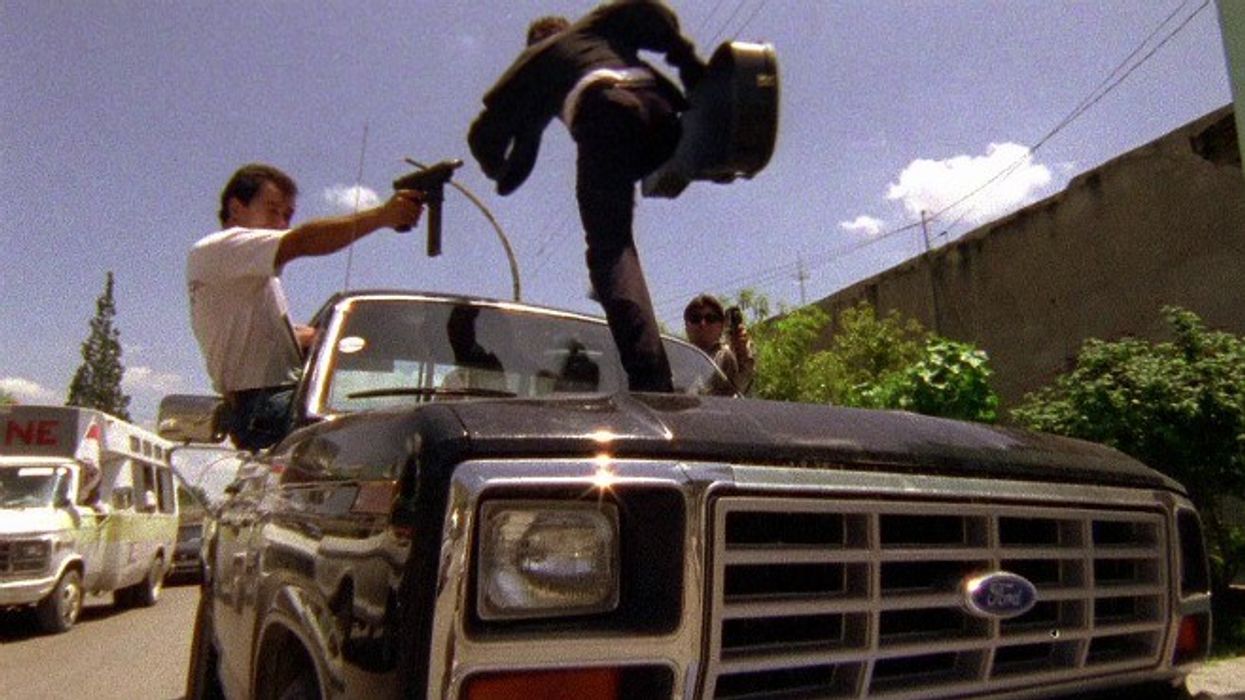Robert Rodriguez on How to Get Production Values for $0
One reason Robert Rodriguez has, arguably, been such a successful filmmaker is his background in extremely low-budget filmmaking, exemplified by his $7,000 first feature, El Mariachi.

After the Mexican straight-to-video action market didn't want the film, which had been Rodriguez' initial plan for the movie, he went to L.A. and ended up striking gold with Columbia pictures, which was no doubt astonished at what the young director had managed to accomplish on what is less than the daily craft-service budget on many big budget films. About $250,000 were put in before its theatrical release, but Rodriguez' own cut is pretty impressive, and almost indistinguishable, as evidenced by his much-beloved first installment of his "10-Minute Film School" series.
This video really is a gift that keeps on giving, and there is ample reason to revisit it. Here, I'd like to concentrate on what he has to say about how to film sequences that look far more complicated (important, especially in an action sequence) to shoot than they actually were.
A few takeaways:
Whatever You Do, Keep Rolling
One of his great pieces of his advice is to keep rolling the camera. Admittedly, this applies more if you are shooting on film, where your ability to capture images is severely limited, but economy of style, the creativity forced on by discipline, whether external or self-directed, is never a bad thing. He explains how he would shoot a medium shot of a scene, then, without cutting, zoom in and get the shot from there, so that the illusion was of a whole new setup, provided the two were not juxtaposed immediately next to each other. In this way, he saved film and time, and even more than money, one could argue time is the most precious commodity on set.
Keep Your Friends Close and Your Cast Closer
When two local residents, one of them a TV newscaster with power to sway public opinion, came out against the film, Rodriguez just offered them roles in the film. They couldn't resist, and ended up becoming the bartender and the hotel manager.
Make Use of What You Have
Rodriguez explains how he made use of every resource at his disposal. For instance, besides his practice of zooming in to affect new setups where there were none, his lightning philosophy was just as simple: the film was shot almost entirely with a simple work light -- a light bulb inside of a metal reflector. Use of boards to bounce and duvetyne to diffuse light made his single source of illumination do double and triple duty, and when he needed extra illumination, he made use of the practical lights on his set. He made use of what was around him, and that's the crucial thing.
He also explains how the two guitar cases in the film (with one belonging to a traveling musician, the other the trademark repository of one of the bad guy's caches of weapons) were actually the same guitar case, but clever cutting made the two appear to be discreet. Similarly, he used the same pickup truck (the production truck, as a matter of fact) in several scenes, notably in the aforementioned bus scene.
The lesson here: No matter how much you have at your disposal, and odds are even the most austere filmmaker has exponentially more technological wizardry at their disposal than Rodriguez had in 1992 at the age of 23. Imposing aesthetic limitations on yourself is usually (at least at the beginning of your filmmaking career) one of the best things you can do for yourself as an artist. It all comes down to the simple principle: if you can do a lot with a little, think of what you can do when you get a lot?













